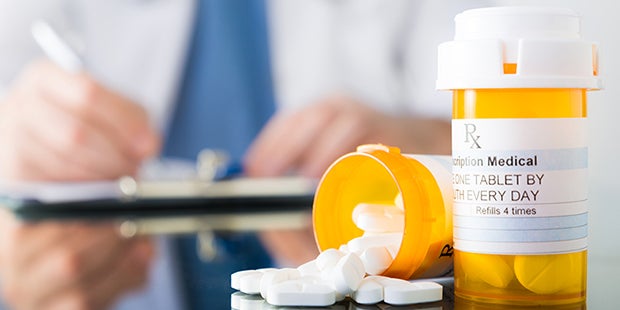

How Rx Drug Pricing Is Ripe for Disruption

America’s prescription drug spending crisis is exacting a heavy price on patients, hospitals and payers. A survey report from the AHA and the Federation of American Hospitals found that between 2015 and 2017, total hospital spending on drugs increased on average by 18.5 percent per admission, including a jump of 28.7 percent per outpatient adjusted admission. That increase cost hospitals an average of $1.8 million. These price increases follow record growth in prescription drug spending of 38.7 percent in the inpatient setting from 2013 to 2015.
In analyzing and commenting on the survey results, the NORC [formerly the National Opinion Research Center] at the University of Chicago found that hospitals and health systems face unsustainable increases in drug spending. The question of what to do about it is still being debated, but startup companies and the AHA are stepping up with proposed solutions.
A recent report in MobiHealth News explores how well-funded, established startups and fledgling companies alike are finding ways to cut the costs of prescription medications. Their services are targeted to the
GoodRx, the largest player in this sector with a reported valuation of $2.8 billion, partners with pharmacy-benefit managers to offer discounts on generic drugs to people with high-deductible plans and the uninsured. GoodRx users can see the price they’d pay for a medication with a GoodRx coupon, and then compare that price with their insurance plan price. In many cases, the GoodRx discounted price ends up costing consumers less out of pocket. The company makes money through a transaction fee on each sale it generates and through GoodRx Gold, its premium offering.
Another company, Blink Health, caters to patients with high-deductible plans. It allows patients to buy low-priced generic medications online with a price-match guarantee and then provides free home delivery or local pickup at Walmart, Safeway and Kroger pharmacies. Hoy Health has a similar strategy but a slightly different execution. Its HoyMEDS product provides consumers with a discount prescription savings card accepted by most pharmacies in the U.S. and Puerto Rico. Users go online to compare generic medication prices at pharmacies near where they live and the HoyMEDS savings card allows them to pay those prices at the store.
As much as private sector programs like these may make medications more affordable for some patients, many have foregone their drugs because they can’t afford them. A 2017 Consumer Reports survey found that 14 percent of respondents did not fill their prescriptions because of price increases in medications they take regularly. Legislators and public policy experts have debated for decades about the best way to address the larger issue of how to achieve sustainable, affordable drug prices. This dialogue has now been elevated in health care reform talks.
The AHA has worked with the Campaign for Sustainable Rx Pricing to develop a series of drug pricing policy recommendations. The recommendations address the following five areas:
- Increased competition and innovation: Recommendations include fully resourcing the Food and Drug Administration review and approval office, fast-tracking generic applications when no or limited generic competition exists and incentivizing generic drug manufacturers with fast-track voucher rewards.
- Increased transparency: The AHA calls for increasing disclosure requirements related to drug pricing, research and development at the time of application for drug approval and issuing consumer- and provider-facing annual reports with easy-to-use resources on drug pricing.
- Payment for value: While significant strides have been made in value-based payment models for hospitals and physicians, little work has been done on drug-purchasing models. The AHA would like to see development of evidence-based comparative-effectiveness data on prescription drugs and aligning payment with the most commonly used drug dosage.
- Improved access: Recommendations include making it legal for providers and patients to reimport drugs for use in the U.S. in certain instances and requiring mandatory, inflation-based rebates for Medicare drugs.
- Aligning incentives: Among the recommendations are implementing stricter requirements on direct-to-consumer advertising disclosures, removing tax incentives for drug-promotion activities and developing prescriber education and clinical decision-support tools, including prescriber monitoring programs.



